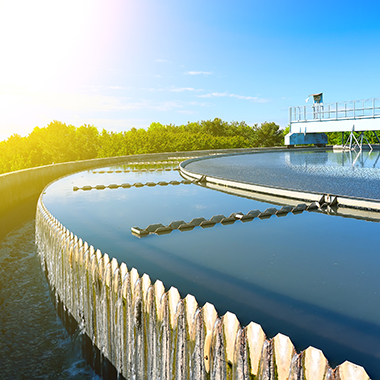水中化學需氧量與分析 Chemical Oxygen Demand (COD)

Why Measure Chemical Oxygen Demand (COD)? 為什麼要測量化學需氧量(COD)?
When treated wastewater is discharged into the environment, it can introduce pollution in the form of organic content to receiving waters. High levels of wastewater COD indicate concentrations of organics that can deplete dissolved oxygen in the water, leading to negative environmental and regulatory consequences. To help determine the impact and ultimately limit the amount of organic pollution in water, oxygen demand is an essential measurement.
When treated wastewater is discharged into the environment, it can introduce pollution in the form of organic content to receiving waters. High levels of wastewater COD indicate concentrations of organics that can deplete dissolved oxygen in the water, leading to negative environmental and regulatory consequences. To help determine the impact and ultimately limit the amount of organic pollution in water, oxygen demand is an essential measurement.
當處理的廢污水排放到環境中時,它可以有機物的形式對受納水體帶來污染。廢污水 COD 濃度高表示有機物濃度會消耗水中的溶解氧,對環境有負面影響。為確認其影響程度,並且最終能夠限制水中有機污染物含量以符合法規要求,需氧量是一項重要的量測指標。
At Hach®, find the testing equipment, resources, training and software for COD measurement and management during water treatment.
Hach提供精確量測和管理水處理過程中 COD濃度與變化的分析設備方案。
Which Processes Require Chemical Oxygen Demand Monitoring? 哪些過程需要監測化學需氧量?
Municipal and Industrial Wastewater Treatment 民生污水及工業廢水處理

Influent waters entering wastewater plants are high in organics and the wastewater plant must reduce the “organic loading” before discharging water to a receiving body. 進入污水處理廠的進水中有機物含量很高,污水處理廠必須在將水排放到接收水體之前減少「有機負荷」。
Knowledge of oxygen demand is useful throughout the treatment for measuring waste loading, evaluating the efficiency of the process and ensuring compliance with regulations for the oxygen demand of effluent. 對於在整個水處理過程中量測廢污水負荷、評估過程效率以及確保遵循廢污水需氧量的法規標準,了解需氧量是非常有用的。
Primary Treatment: 一級處理
Clarifiers, or sedimentation basins, slow the flow of the wastewater to allow suspended solids to settle. Surface skimmers collect any floating fats, oils and greases. With the use of this mechanical and physical means, approximately 30% of organic matter is removed from the wastewater and is routed to the solids management area of the plant.
Clarifiers, or sedimentation basins, slow the flow of the wastewater to allow suspended solids to settle. Surface skimmers collect any floating fats, oils and greases. With the use of this mechanical and physical means, approximately 30% of organic matter is removed from the wastewater and is routed to the solids management area of the plant.
Secondary Treatment: 二級處理
This process uses living organisms to aid in reducing organics. In the aeration basin, bacteria and microorganisms convert biodegradable organic matter to carbon dioxide and water. With this conversion, organics are reduced, thereby reducing oxygen demand.
This process uses living organisms to aid in reducing organics. In the aeration basin, bacteria and microorganisms convert biodegradable organic matter to carbon dioxide and water. With this conversion, organics are reduced, thereby reducing oxygen demand.
Discharge Limits: 排放水限值
Discharge limits vary from plant to plant depending on the characteristics of the receiving water, effects on aquatic life, recreational uses and other factors. Discharge permits may stipulate a specific maximum concentration for BOD or COD, or a percent removal. Some plants require achieving as much as 90% removal of oxygen demand.
Discharge limits vary from plant to plant depending on the characteristics of the receiving water, effects on aquatic life, recreational uses and other factors. Discharge permits may stipulate a specific maximum concentration for BOD or COD, or a percent removal. Some plants require achieving as much as 90% removal of oxygen demand.
For compliance, it’s necessary to measure BOD or COD in the influent water as it enters the plant, before mechanical screening processes and at the end of the treatment at the discharge point.
When selecting a method for analyzing oxygen demand, it’s important to consider the following: 在選擇分析水中分析需氧量的方法時,以下是考慮的重點
- Specific testing application 具體測試應用
- Oxidant that will be used 將使用的氧化劑
- Completion time 完成的時間
- Accuracy and precision of the measurement 測量的準確度和精密度
How is Chemical Oxygen Demand Monitored? 如何監測化學需氧量?
COD Testing Advantages COD測試的優勢
- COD is most suitable for rapid and frequent monitoring of treatment plant efficiency and water quality. COD最適合快速、頻繁地監測廢污水處理廠的效率和水質
- This method is more accurate than BOD (with a 5-10% relative standard deviation) and it offers a relatively short analysis time (2-hour digestion time), compared to the 5-day BOD test. 此方法比 BOD 更準確(相對標準差為 5-10%),且與 5 天的 BOD 測試相比,其分析時間相對較短(2 小時加熱消解時間)
- The COD oxidant is not affected by toxic materials in the sample. COD 氧化劑不受水樣中有毒物質的影響
- Changes in the COD value between influent and effluent may parallel BOD content and supplement BOD results. 進水和排放水之間 COD 值的變化可能與 BOD 濃度變化一致,並為BOD 數據結果的補充資訊
COD Testing Limitations COD 測試的限制
- Some organic compounds are not oxidized completely with the COD method. 某些有機化合物無法以 COD 方法完全氧化
- COD measurement can experience interference from chloride ions. COD 測量可能會受到氯離子的干擾




